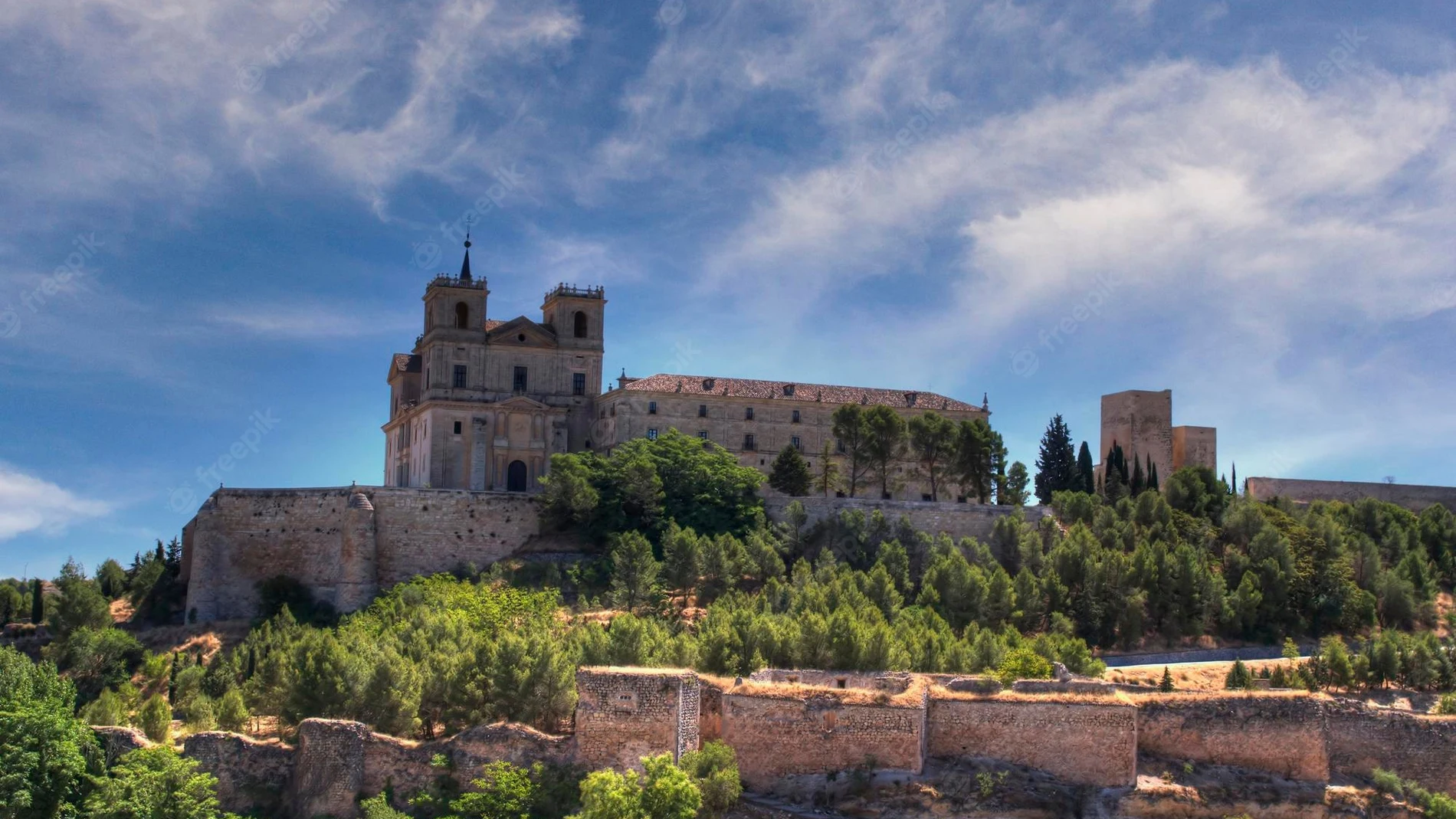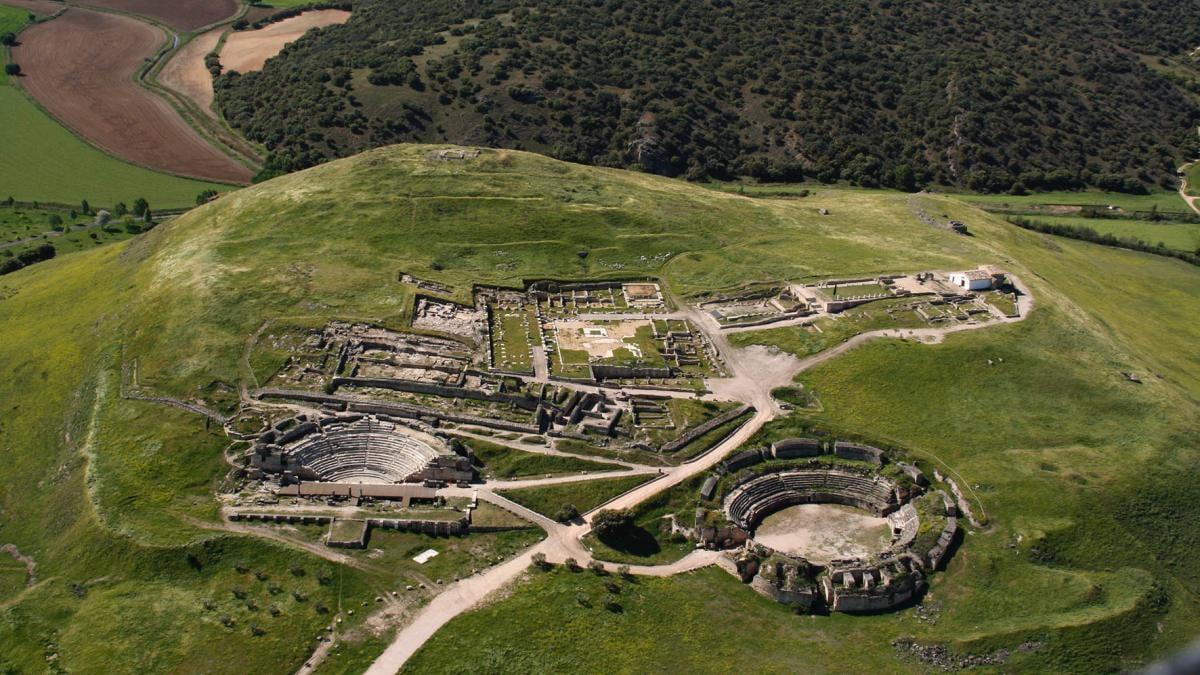Uclés
Uclés is a municipality of Spain located in the province of Cuenca, Castilla–La Mancha. The municipality of Uclés has a registered population of 260 inhabitants.
The Monastery of Uclés
The monastery is a result of the long period of construction. There are three different architectural styles implemented: Plateresque, Herrerian and Churrigueresque, which makes it an ideal place to study the history of art. The east wing of the monastery, from the first half of the 16th century, was built in the Plateresque style. The church, which is locatedon the north wing, and has the Herrerian style. The rest of the monastery, erected during the 17th century, is in the Baroque style and culminates with its Churrigueresque-style façade, work of Pedro de Ribera.
The church is the work of several architects who were the disciples of Juan de Herrera (architect of El Escorial). For this reason the monastery is called the "Escorial de la Mancha." It has a Latin cross plant with a single nave, with five sections and a choir raised on a carpanel arch. The transept is higher and closes in the shape of a lantern. The dome is shaped as a half orange and is decorated with segments on pendentives by Antonio Segura. The body of the church is separated from the presbytery by a fence decorated with the royal arms and the cross of Santiago. The side chapels are interconnected. Its construction was completed in 1598.
The main façade was built in 1735 by Pedro de Ribera, an important baroque master of the court. What stands out on this façade is both its composition, similar to an altarpiece, and its sculpted ornamentation.
Four pilasters appear arranged on the façade, without architectural support, which act as decorative elements.
There are dolphins, lions, heads, warriors, trophies, fruits and two crosses of Santiago at the top. As a finishing touch, there are two busts of Moors held with chains, half a body of del first Master D. Pedro Fernández de Fuentecalada with the master cross in his left hand and a sword in his right that reads Fidei defensio ("Defense of the faith").
At the bottom there is the inscription Caput Ordinis ("Head of the Order"), some crosses, a royal crown, knights with trophies and chained Moors, an exponent of the dominion that was held over them and the slavery to which they were reduced.

Segóbriga
The archaeological park is one of the most important archaeological complexes of the Meseta. The monumentality of its excavated remains, where all the public buildings are present, essential references of Roman architecture, has turned Segobriga into a unique site to understand the urban characteristics of this period as it does not have any current city superimposed on it. Added to this is the surrounding landscape, which has remained practically intact since Roman times, helping to contextualize and understand the city, its space outside the walls and the territory.
The Site
The Segóbriga archaeological park is an important Celtic and Roman site located around the so-called Greek´s Head (Cabeza de Griego) Hill, in the town of Saelices (Cuenca, Castilla-La Mancha, Spain). Since June 3, 1931, it is declared as a National Monument.
The name Segóbriga derives from two terms of Celtiberian origin, a language of the Indo-European Celtic branch. The toponym would come from the term Sego-, which would mean "victory" (a prefix also present in the name of the cities of Segovia, Segorbe, Segeda and Segontia), and from the suffix -briga, which would mean "city", "fortress". So its translation would be "City of Victory" or "Victorious City." The term -briga is very common in the place names of the Celtiberian region or the expansion of the Celtic languages in the Iberian Peninsula.

Interesting links
- City Hall of Uclés: https://esucles.portalwebmunicipal.es/
